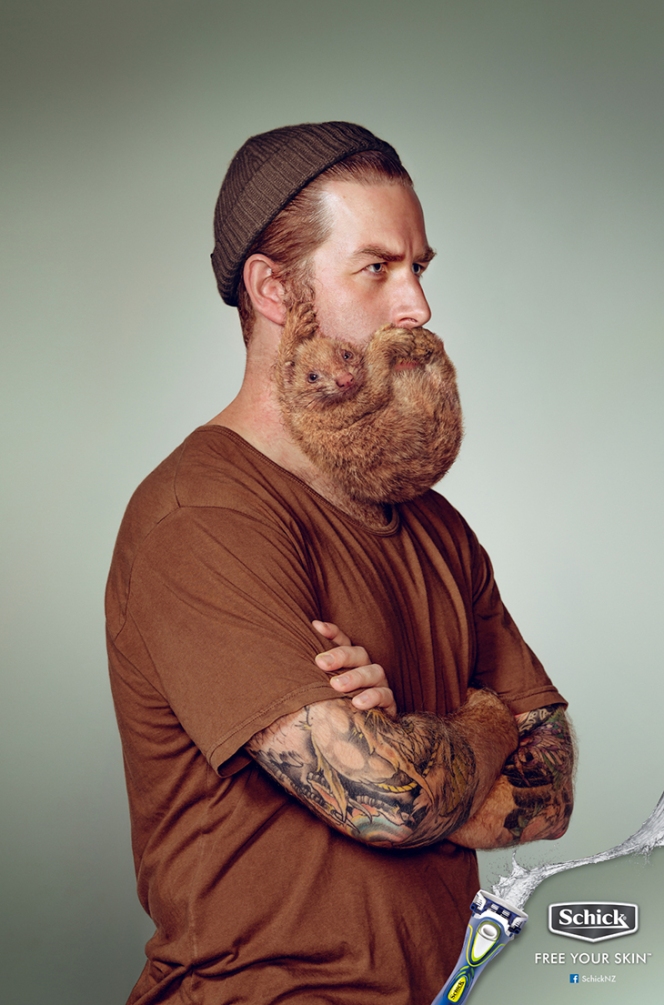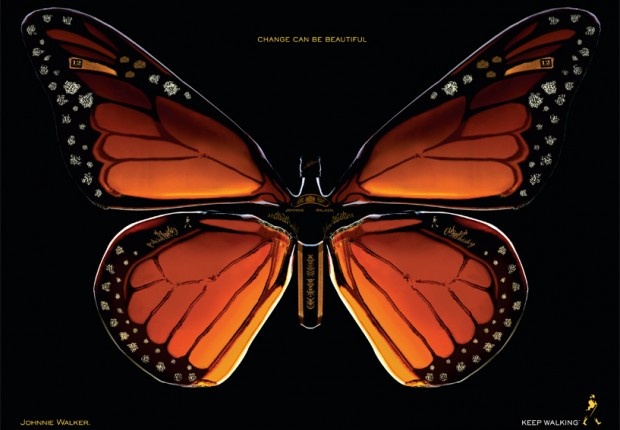Your Cart is Empty
Customer Testimonials
-
"Great customer service. The folks at Novedge were super helpful in navigating a somewhat complicated order including software upgrades and serial numbers in various stages of inactivity. They were friendly and helpful throughout the process.."
Ruben Ruckmark
"Quick & very helpful. We have been using Novedge for years and are very happy with their quick service when we need to make a purchase and excellent support resolving any issues."
Will Woodson
"Scott is the best. He reminds me about subscriptions dates, guides me in the correct direction for updates. He always responds promptly to me. He is literally the reason I continue to work with Novedge and will do so in the future."
Edward Mchugh
"Calvin Lok is “the man”. After my purchase of Sketchup 2021, he called me and provided step-by-step instructions to ease me through difficulties I was having with the setup of my new software."
Mike Borzage
The Edge: Graham Kelman, Dynamic Design Experiences at Guild.
May 01, 2015 5 min read
Novedge: Tell us a little bit about Guild and your role inside the organization.
Graham Kelman: My name is Graham Kelman and as the Creative Director of our NY studio, I lead a team or Architects, Industrial Designers, Graphic Designers, and creative Technologists in visualizing and executing inspiring brand installations. Guild is an interdisciplinary creative agency. We relish in creating dynamic experiences that transcend genre; from digital to physical, from large to small, from graphic to architectural. In short, we connect brands to the worlds of industry, media, and consumers via captivating and engaging environments.  Novedge: How does a 'design + build collective' work?
Novedge: How does a 'design + build collective' work?
Graham Kelman: Quite simply, we blur the process between creative and production by strategizing, ideating, designing, anThis gives our team the advantage of guiding our projects from start to finish. From a day-to-day perspective, it's very fulfilling to have an idea, to visualize it, and to immediately interface with the people who are going to bring it to fruition. Our designers understand fabrication and our fabricators have an eye for design. This collaboration tends to create a feedback loop where ideas are continuously informed by reality.
Novedge: What are some of the most recent projects Guild has worked on?
Graham Kelman:While we need to keep many current projects under wraps, we have recently completed several notable installations that we are very excited to share. We just created a digital experience for the revolutionary scientific campus of Bell Labs where we designed an interactive room that was controlled from a slab of stone. We also have been working with Howard Hughes on several architectural installations at South Street Seaport including faceted steel food service pods for Smorgasburg, and a sleek two-story retail space for Seaport Studios. For Nars, we came up with the idea of destroying a sphere with hammers controlled by tweets; it was all captured by a live broadcast. Our most recent projects somehow tend to be larger, more permanent, and more technological. 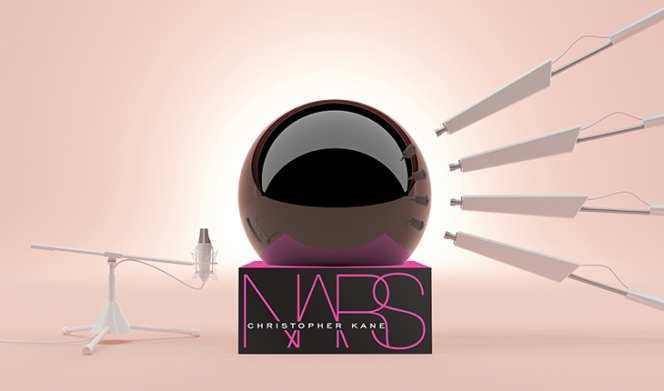 Rendering for NARS concept.
Rendering for NARS concept.
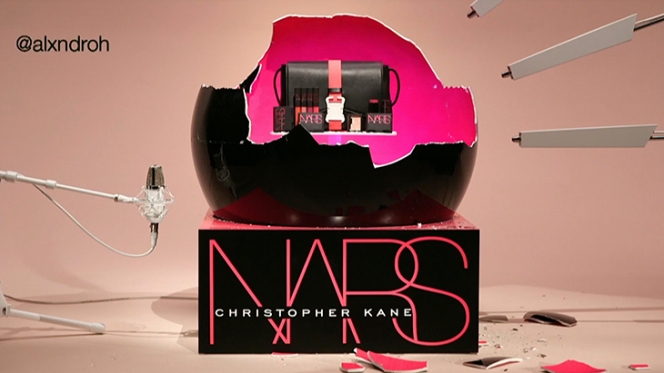 Image of live distruction of NARS sphere.
Image of live distruction of NARS sphere.
When our studio is busy it can be like a mad scientist's laboratory. Recently while walking from one side of our Brooklyn campus to the other, I saw a responsive magnetic liquid experiment, a geodesic lounge pod in construction, an interactive piece of onyx being illuminated with programmable LEDs, an NYC coffee cart with a spinning snowman head, and a gigantic psychedelic elephant printed on copper. The projects that I enjoy the most are the ones that layer many fields of design in order to create a unique synergistic output.
Novedge: Your portfolio is really eclectic, what's your approach to very different projects? What is your constant in design?
Graham Kelman: On the Creative Team, we take our understanding of digital design tools very seriously as an essential medium of communication for all internal and external project stakeholders. If we can’t tell the story to our clients or each other, then we can’t make it, we can’t consider it, and we can’t sell it. Our craft in capturing and developing an idea with design software is something that we persistently apply to all of our projects, and the quality that results is something our clients have come to expect. It is not only essential for presenting an idea, but more importantly, for realizing, iterating, and executing the idea. The difference between having a good idea and executing it well is everything. It’s the ethos of curiosity and style. Passion and curiosity fuels creativity.
Novedge: You have had memorable clients, can you talk about some of them?
Graham Kelman: We work with some of the most exciting brands in the world, both large and small. The wide range of brands we collaborate with is the key to creating the breadth of work that we do. Sometimes our clients come to us with definitive ideas, and the creative process lies in the design of the details. On the other end of the spectrum are the projects where the client has little idea of what they want. Starting with a campaign, an effect, or a piece of inspiration- we work with brands through an iterative process to design and execute. The projects that I love were not only beautiful in their realization but also in their process.  Micropolis.
Micropolis.
For Microsoft, we designed a 200-foot scale model of Manhattan with integrated video mapping, touch screens, and sound installations that hundreds of people could experience. We thoroughly analyzed the city's geography and neighborhoods in order to come up with a system of hundreds of built components that could configure and arrange to create a stylized impression of each district of Manhattan. This went from concept to install in a single month. 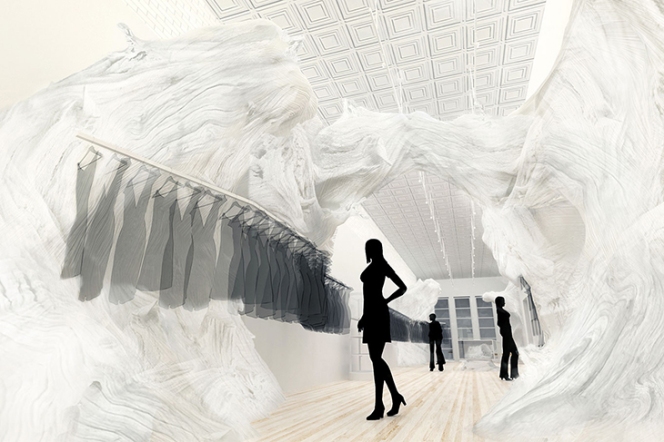 For Sass+Bide's Flagship location we created a gigantic white driftwood-inspired sculpture that defined the program within. The undulating form was created through many iterations of both physical and digital modeling. We created an initial 3D massing model in Rhino and used it to sculpt a scaled clay model. From this, the client then was able to work with our designers to literally sculpt certain gestures into their retail environment. We 3D scanned the physical model and later created CNC structural profiles that were used as an armature for the fiberglass coated fabric skin.
For Sass+Bide's Flagship location we created a gigantic white driftwood-inspired sculpture that defined the program within. The undulating form was created through many iterations of both physical and digital modeling. We created an initial 3D massing model in Rhino and used it to sculpt a scaled clay model. From this, the client then was able to work with our designers to literally sculpt certain gestures into their retail environment. We 3D scanned the physical model and later created CNC structural profiles that were used as an armature for the fiberglass coated fabric skin.  Over the past several years we’ve created several amazing pieces for the textile/wall-covering company Wolf Gordonwhere we collaborated with the design masters at Karlsson Wilker to make several wild hovering sculptures that blurred the lines between graphics, textile design, and architecture. All of them were exercises in making something visually complex yet conceptually simple in terms of organizational logic. Using repetition of regular components, we were able to achieve some stunning results just by altering their orientation to each other. Digital 3D visualization both in design and production was crucial for these projects.
Over the past several years we’ve created several amazing pieces for the textile/wall-covering company Wolf Gordonwhere we collaborated with the design masters at Karlsson Wilker to make several wild hovering sculptures that blurred the lines between graphics, textile design, and architecture. All of them were exercises in making something visually complex yet conceptually simple in terms of organizational logic. Using repetition of regular components, we were able to achieve some stunning results just by altering their orientation to each other. Digital 3D visualization both in design and production was crucial for these projects.  For Etienne Aigner, we created several projects where we used parametric design tools like Grasshopper to automate our design process. For a retail experience, we redefined a pop-up booth in the Time Warner Center with repeating CNC’d layers of aluminum slats to create a eye-popping red, white, and black woven exterior skin; it was all generated from rule-based algorithms. We applied a similar approach to their window in Soho where we created an “explosion” of 600 paper airplanes to convey the ideal of travel with a minimal budget. The existing window space, the number of airplanes, the form, and the number of man-hours to fold each plane were all parameters that were integrated into the logic of the design.
For Etienne Aigner, we created several projects where we used parametric design tools like Grasshopper to automate our design process. For a retail experience, we redefined a pop-up booth in the Time Warner Center with repeating CNC’d layers of aluminum slats to create a eye-popping red, white, and black woven exterior skin; it was all generated from rule-based algorithms. We applied a similar approach to their window in Soho where we created an “explosion” of 600 paper airplanes to convey the ideal of travel with a minimal budget. The existing window space, the number of airplanes, the form, and the number of man-hours to fold each plane were all parameters that were integrated into the logic of the design. ![GUILD-EA_FINAL[1] GUILD-EA_FINAL[1]](https://novedge.files.wordpress.com/2015/05/0bdbc-6a00d83451bbe269e201b8d10ba1f9970c-800wi.jpg?w=664) Novedge: What iconic landmark or brand would you like to re-Design, to build for?
Novedge: What iconic landmark or brand would you like to re-Design, to build for?
Graham Kelman: Each new brand that we work with presents an opportunity to apply a new manner of approaching a complex design problem. Just to name a few, I would love to make a publically responsive social activation with a technology brand like Google, a mind-blowing installation with a retail brand like Uniqlo, a kinetic sculpture for a media outlet like the New York Times, and a pavilion or social space for a public entity like the New York City Department of Parks and Recreation. In addition to brands, there are several things I would like to have the opportunity to take on in the future. I would like to create public art or an installation within a museum or cultural institution. I would like to engage in more mediums in a deeper way, like video content creation, animation, kinetic sculptures, product design, corporate identity, web design, and public way finding. I would love to work in different countries that we haven’t worked in, and to exhibit some our process work and prototyping to the public.
Novedge: Give us your favorite definition of Design.
Graham Kelman: Good design is when form follows function. Great design is when form is function.
It's very exciting to see our design tools as part of that chains that brings great ideas to fruition. Guild's work is brilliant! If you want to see more of it, check out Guild's own websiteand follow them on Twitter.
And don't forget to follow Novedge on Twitter too!
Related articles
Also in NOVEDGE Blog
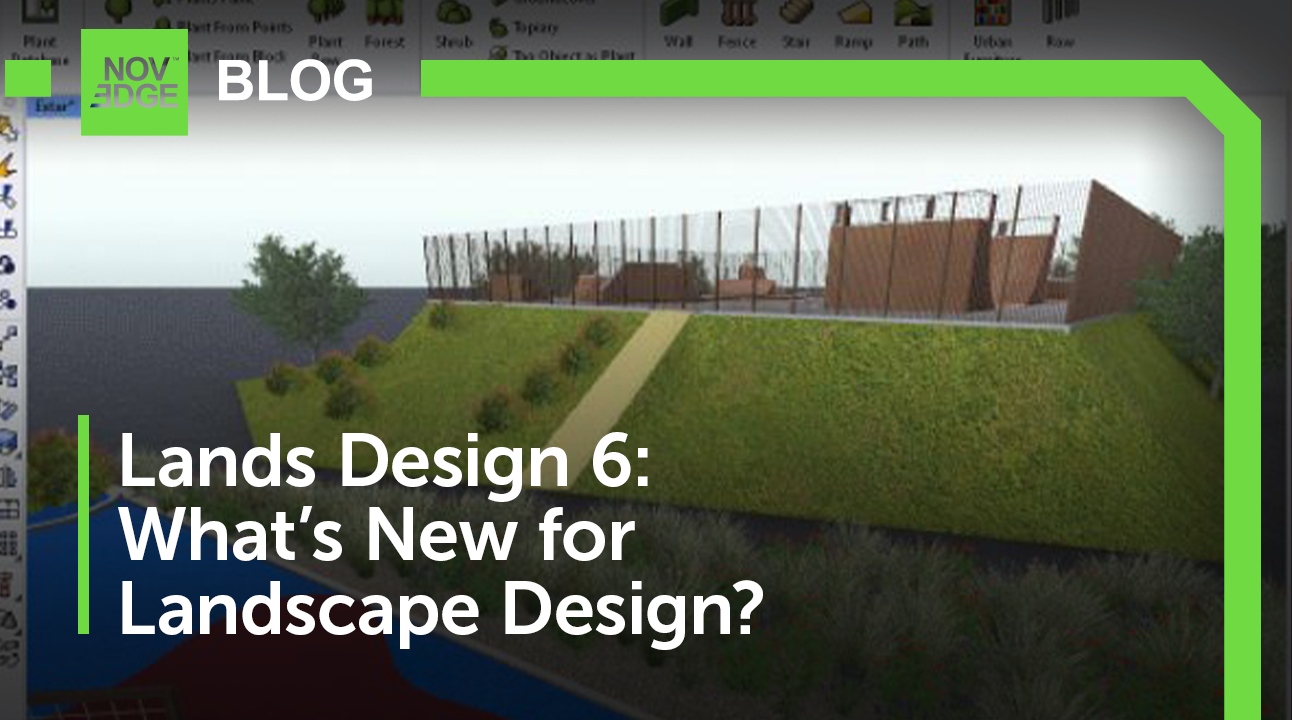
Discover the Enhanced Features of Lands Design 6: Intuitive Interface, Rhino Plugin Integration, and Advanced Design Tools
April 30, 2024 3 min read
Read More
Maxon One Spring 2024 Release Packs Particle Power, Toon Shading, and More
April 10, 2024 4 min read
Read MoreSubscribe
Sign up to get the latest on sales, new releases and more …




